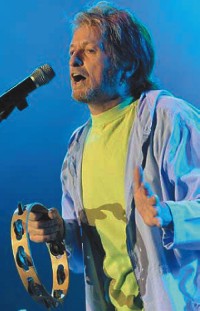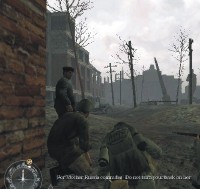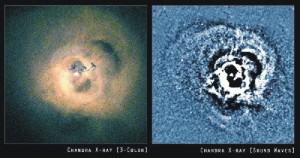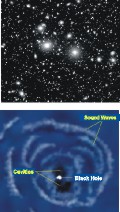
35
Years of YES
By
Craig Rosen
NEW
YORK (Billboard) - "It's the most positive word in the English
language," Yes drummer Alan White says of his band's moniker.
Beyond that, Yes
is a classic-rock institution that has thrived for the better part
of three decades, since forming in 1968 in Birmingham, England.
As Yes prepares
to return to U.S. arenas on the heels of the release of "The
Ultimate Yes -- 35th Anniversary Collection," Billboard caught
up with all five members of the group before they converged on a Los
Angeles studio to record material for a bonus disc to be included
with the American version of the retrospective. A new studio album
is planned for next summer.
Q: In
your wildest dreams, did you ever think Yes would celebrate its 35th
anniversary?
Jon Anderson (Vocals
and founder): Two or three years was the maximum in those days, or
two or three minutes, depending on what the day went like. When we
started, we really wanted to be as good as a band called Family. They
were doing the clubs. That's all we wanted -- to get as big as that,
and probably do some university gigs. You never think you're going
to have success. It just comes upon you, and that's when you count
your blessings, because a lot of people don't get that success.
Steve Howe (Guitars):
The '70s were quite an achievement. When that finished and I formed
Asia with John Wetton, I really felt that was then, and now I was
going to keep doing different things. But by the time I had Asia and
GTR Steve Hackett, I started to realize that the Yes music of the
'70s was great.
Chris Squire (Bass
and founder): I was 15 when the Beatles came to light around '63.
That's kind of what got me interested in the whole profession. At
that time, a long career in my eyes was like the Beatles, '63 to '69
-- six years. I thought, "Wow! Wouldn't it be great to be in
a band that had a six-year career?" I never ever thought at some
point together 35 years, because there was no blueprint for that.
Rick Wakeman (Keyboards):
In my various ins and outs, I've been around for about a third of
the life of Yes. In the '80s, many of the classic bands dismantled
themselves or took incredibly long sabbaticals.
Alan White (Drums):
I joined at a very early time the band was only 3 years old. In joining,
I gave the band three months to test our styles out and whether I
would enjoy playing with the band and them with me. And here we are
about 31 years later.
Q: The
band's history has been rather soap opera-like, with all the personnel
changes. What were the low points?
Anderson: We've
all had our moments. It's always been a question of, "Are you
into where we're going? If you're not, you should leave." We
didn't all come from the same town, so we didn't feel like we were
bound together with an umbilical cord.
Wakeman: The low
points to me were certainly around the "Topographic Oceans"
era. I couldn't get into the direction the music was going, and Yes
is always a give-and-take. Having to make the decision to leave, that
was a low point.
Q: What
do you consider the highlights of the band's career?
Anderson: There
are about three or four. The time when we initially became famous
in England, and we played with Cream at their final concert at Albert
Hall. That was like a dream. Also when we did "Close to the Edge."
The scope of doing a piece of music like that and having an audience
that would listen to it was a great feeling.
Another highlight
was when we had a resurgence in the early '80s with "90125";
that was a very big leap into being famous for 10 minutes. We had
a No. 1. We were treated like rock stars. A week into that tour, I
went with this young filmmaker, Steve Soderbergh, to see "Spinal
Tap." I went in and saw my whole world in front of me. It blew
my mind. I never laughed as much in my life. I could never take myself
seriously again.
Howe: "Close
to the Edge" was the invention of the 20-minute Yes, and it stands
because of that. We were challenging the idea that we could play 18-plus
minutes at a time. Jon and I were so excited to have this sort of
symphonic approach to our music. We did "Roundabout," which
was quite a long song, and then we sat around with these smirks on
our faces as the songs started to expand. I started playing Jon some
ideas, and we realized we were going to invent something really big.
The next time
we hit it was when Rick returned and we did "Going for the One"
album. We were still in this wonderful pre-digital time when there
was marvelous warmth. Listening to that guitar at the beginning of
"Turn of the Century," I was feeling every moment of it.
Wakeman:
The highlights to me were certainly the "Fragile"/"Close
to the Edge" years -- '71, '72 and early '73 -- because I thought
the balance in the music business was perfect. Bands were left alone
to create music. Nobody told us what to play, how to play, how to
record. We were the musicians, the scientists in the lab.

a
brief history of YES
Yes was the quintessential English art-rock band,
with all the excess and all the glory that entails. Loaded with too
much virtuosity, too many ideas and too many personnel changes for
one band to deal with, Yes has produced its share of spotty albums
over the past 20 years. Yet during its classic period lasting between
1970's The Yes Album and 1977's Going For The One Yes was almost consistently
inspired. Anyone needing to defend art-rock only has to pull out the
side-long title track of Close To The Edge (1972): It never got more
visceral or more melodically soaring than that.
Initially Yes was simply a pop group that got very,
very ambitious. Their first two albums have some R&B traces, thanks
to the more basic styles of guitarist Peter Banks and keyboardist
Tony Kaye, who both got weeded out early. Yet the delicate, almost
feminine tones of singer Jon Anderson proved an early trademark, along
with the jazz leanings of the rhythm section (bassist Chris Squire
and drummer Bill Bruford, replaced in 1972 by the heavier-hitting
Alan White).
 With
the arrival of guitarist Steve Howe and keyboardist Rick Wakeman,
Yes was free to explore the rock-symphony approach they aspired to.
Their ambitions reached a peak on 1973's Tales From Topographic Oceans--a
four-song, lyrically dense double album that even Wakeman found excessive
(he exited for a year, replaced by Patrick Moraz)-- yet there were
more than enough lovely and powerful moments to justify the stretch.
Reunited with Wakeman after a year making solo albums, Yes stripped
down to relative basics and made its last great album with 1977's
Going For The One.
With
the arrival of guitarist Steve Howe and keyboardist Rick Wakeman,
Yes was free to explore the rock-symphony approach they aspired to.
Their ambitions reached a peak on 1973's Tales From Topographic Oceans--a
four-song, lyrically dense double album that even Wakeman found excessive
(he exited for a year, replaced by Patrick Moraz)-- yet there were
more than enough lovely and powerful moments to justify the stretch.
Reunited with Wakeman after a year making solo albums, Yes stripped
down to relative basics and made its last great album with 1977's
Going For The One.
Since then the band's inability to settle on a permanent
lineup, coupled with the inevitable career fatigue, has kept them
from hitting the same peaks. Anderson and Wakeman left in 1979, replaced
by the two members of the Buggles (the resulting album, Drama, was
nowhere near as bad as it could have been).
Yes was then laid to rest until 1983, when Anderson,
Kaye, Squire and White formed a new lineup with guitarist/singer Trevor
Rabin. At first Rabin's mainstream instincts were just what the band
needed--the 1983 album 90125 was both creative and commercial, if
not quite the cosmic Yes of old--but wound up taking far too much
control and made Yes sound too ordinary.
Anderson
rebelled and pulled in the other ex-members for a competing band,
clumsily billed as Anderson, Wakeman, Bruford, Howe--but that didn't
work either, thanks to overdone production and spotty material. The
nadir came when some unfinished AWBH demos were cobbled together with
some Rabin outtakes as a Yes album, Union; an eight-man lineup cashed
in with a reunion tour. The closest thing to a real comeback happened
when the Topographic Oceans lineup reunited in 1996 for Keys To Ascension,
a live album of great Yes obscurities, plus a surprisingly solid studio
section (two new songs totaling 30 minutes, their first long suites
in years). Ever since the band released a couple of studio albums
and continues to hit the road.

Call
of Duty
Gamespot
Rating: 9.0. Difficulty: Medium. Learning Curve: about a
half-hour. Stability: stable. Version: Retail. Publisher: Activision.
Developer: Infinity Ward. Genre: Action. Release Date: Oct 10. Requirements:
128 MB RAM, 8X CD-ROM, 32 MB VRAM, 1400 MB disk space, DirectX v9.0.
There is no shortage of World War II-themed first-person
shooters available, and it's no secret that a number of them, including
Medal of Honor: Allied Assault and Battlefield 1942, are extremely
good. Now you can add Call of Duty to that list.
The first game by Infinity Ward, a studio composed
of some of the same team that worked on Allied Assault, Call of Duty
presents outstanding action all around and is at least as good as,
and in several ways is simply better than, any similar game. Though
both its single-player and multiplayer modes will be familiar to those
who've been keeping up with the WWII-themed shooters of the past several
years, most anyone who plays games would more than likely be very
impressed with Call of Duty's authentic presentation, well designed
and often very intense single-player missions, and fast-paced, entertaining
multiplayer modes.
 This
is a game that pulls together many of the best aspects of other, similar
games, and also includes all sorts of little "wish-list items"
that may have crossed your mind while playing those other games. The
result seems, above all, very well designed. The action in Call of
Duty, ultimately, is arcadelike--much like in Allied Assault or Battlefield
1942. You can't survive a shot to the head, but you can take a few
bullets anywhere else and can keep going just fine. There's also a
clear onscreen indication of the direction from which you're taking
fire (and, as you're getting hit, the screen shudders to make it look
like it hurts). Luckily, first aid kits, conveniently placed in the
levels or occasionally dropped by killed enemies, instantly restore
large portions of your health. You hardly ever need to activate a
"use" key in this game. When you do, you'll use it to instantly
set explosives or grab documents, but you won't use it for opening
doors.
This
is a game that pulls together many of the best aspects of other, similar
games, and also includes all sorts of little "wish-list items"
that may have crossed your mind while playing those other games. The
result seems, above all, very well designed. The action in Call of
Duty, ultimately, is arcadelike--much like in Allied Assault or Battlefield
1942. You can't survive a shot to the head, but you can take a few
bullets anywhere else and can keep going just fine. There's also a
clear onscreen indication of the direction from which you're taking
fire (and, as you're getting hit, the screen shudders to make it look
like it hurts). Luckily, first aid kits, conveniently placed in the
levels or occasionally dropped by killed enemies, instantly restore
large portions of your health. You hardly ever need to activate a
"use" key in this game. When you do, you'll use it to instantly
set explosives or grab documents, but you won't use it for opening
doors.
Actually, that's because you won't be opening any
doors. One gameplay contrivance that's presented in the first few
seconds of the first mission is that any time you see a closed door
in Call of Duty, it's supposed to stay closed. This seems like a minor
point, but how many shooters have you played in which you fumbled
for every doorknob, trying to find the one door that would actually
open? That's simply not an issue in Call of Duty. Despite the highly
authentic atmosphere created for the levels in the game, there tends
to be an intuitive, clear path from the beginning of the level to
the end. The levels can be challenging, at least at the higher two
of the game's four difficulty settings, but they're not frustrating.
If you die, you can restart at your most recent save almost instantly.
You don't need to worry about hitting the quick-save key all the time,
either, since the game automatically and seamlessly saves your progress
not just at the beginning of a level but at several points throughout
the level. The game's brief tutorial at the beginning of the single-player
mode will be second nature for experienced players of first-person
shooters. However, since it's in the context of a military boot camp,
it will also provide, for new and experienced players alike, some
valuable advice on (and practice with) the nuances of Call of Duty's
gameplay.
You cannot sprint in Call of Duty, nor can you tiptoe.
While standing, you move at a constant pace that's not too slow and
not too fast but is just right. You'll have no trouble quickly getting
from point A to point B. However, when you're running from cover to
cover in an area that's under fire, you'll be painfully aware of how
vulnerable you are. You should probably keep your head down, and Call
of Duty lets you easily switch between standing, crouching, and prone
stances. You move slower while crouching--not too slowly though--which
makes this the best way to get around when in the thick of battle.
Movement, as well as turning, is understandably much slower while
prone. Sometimes, however, this is the perfect option for staging
an ambush or staying out of harm's way. As in many shooters, you can
also lean around corners in Call of Duty, which can be a real lifesaver
during some of the game's deadly firefights when you need all the
cover you can get.
Call
of Duty features a wide arsenal of authentic American, British, Russian,
and German WWII weapons, including various rifles, submachine guns,
side arms, and grenades. You can carry only two larger weapons at
a time (as well as a pistol and some grenades), so, typically, you'll
want to have a rifle for out-in-the-open engagements and a submachine
gun for tight-quarter combat. While armed with any of these, you may
shoot from the hip, raise the weapon to eye level and aim down the
sight (for more accuracy at the expense of movement speed), or use
the butt of the weapon to try and club an enemy to death. Manually
reloading your weapon tends to be faster than letting the clip run
out, and some weapons let you switch firing modes, like going from
full-auto to single shot (though, since you can squeeze off single
rounds in full-auto mode, this isn't very useful). Your crosshairs
expand when you're moving and contract when you're steady, pointing
out how much more inaccurate you'll be if you try to run-and-gun.
The weapons themselves are modeled very convincingly, thanks in no
small part to the tactile sense you get from being able to look through
their sights or use them as bludgeons, and most every one will earn
your respect since, in the right situations, they can all be deadly
effective.
Black
Music
By
Synergie
 Black
magic is a term that has been known and practiced for many centuries.
But Black music…? Don't get worried, it's not another unearthing form
the depths of dark arts. It's actually something, well… 'out of this
world'.
Black
magic is a term that has been known and practiced for many centuries.
But Black music…? Don't get worried, it's not another unearthing form
the depths of dark arts. It's actually something, well… 'out of this
world'.
Astronomers using
NASA's Chandra X-ray Observatory have found, for the first time, sound
waves from a super-massive black hole. The "note" is the
deepest ever detected from any object in our Universe. The tremendous
amounts of energy carried by these sound waves may solve a longstanding
problem in astrophysics.
The black hole
resides in the Perseus cluster of galaxies located 250 million light
years from Earth. In 2002, astronomers obtained a deep Chandra observation
that shows ripples in the gas filling the cluster. These ripples are
evidence for sound waves that have traveled hundreds of thousands
of light years away from the cluster's central black hole.
Earlier observations
had revealed the prodigious amounts of light and heat created by black
holes. And now, scientists have detected their sound, too. In musical
terms, the pitch of the sound generated by the black hole translates
into the note of B flat. But, a human would have no chance of hearing
this cosmic performance because the note is 57 octaves lower than
middle-C. For comparison, a typical piano contains only about seven
octaves. At a frequency over a million billion times deeper than the
limits of human hearing, this is the deepest note ever detected from
an object in the Universe.
"The Perseus
sound waves are much more than just an interesting form of black hole
acoustics. These sound waves may be the key in figuring out how galaxy
clusters, the largest structures in the Universe, grow." says
Steve Allen of the Institute of Astronomy.
 For
years astronomers have tried to understand why there is so much hot
gas in galaxy clusters and so little cool gas. Hot gas glowing with
X-rays ought to cool because X-rays carry away some of the gas' energy.
Dense gas near the cluster's center where X-ray emission is brightest
should cool the fastest. As the gas cools, say researchers, the pressure
should drop, causing gas from further out to sink toward the center.
Trillions of stars ought to be forming in these gaseous flows.
For
years astronomers have tried to understand why there is so much hot
gas in galaxy clusters and so little cool gas. Hot gas glowing with
X-rays ought to cool because X-rays carry away some of the gas' energy.
Dense gas near the cluster's center where X-ray emission is brightest
should cool the fastest. As the gas cools, say researchers, the pressure
should drop, causing gas from further out to sink toward the center.
Trillions of stars ought to be forming in these gaseous flows.
Yet scant evidence
has been found for flows of cool gas or for star formation. This forced
astronomers to invent several different ways to explain how gas contained
in clusters remained hot. None of them were satisfactory. Black hole
sound waves, however, might do the trick.
Previous Chandra
observations of the Perseus cluster reveal two vast, bubble-shaped
cavities extending away from the central black hole. These cavities
have been formed by jets of material pushing back the cluster gas.
The jets, which are a counter-intuitive side effect of the black hole
gobbling matter in its vicinity, have long been suspected of heating
the surrounding gas. But the exact mechanism was unknown. The sound
waves, seen spreading out from the cavities in the recent Chandra
observation, could provide this heating mechanism.
A tremendous amount
of energy is needed to generate the cavities, as much as the combined
energy from 100 million supernovas. Much of this energy is carried
by the sound waves and should dissipate in the cluster gas, keeping
the gas warm and possibly preventing a cooling flow. If so, the B-flat
pitch of the sound wave, 57 octaves below middle-C, would have remained
roughly constant for about 2.5 billion years.
Perseus is the
brightest cluster of galaxies in X-rays, and therefore was a perfect
Chandra target for finding sound waves rippling through the hot cluster
gas. Other clusters show X-ray cavities and future Chandra observations
may yet detect sound waves in those clusters, too.
